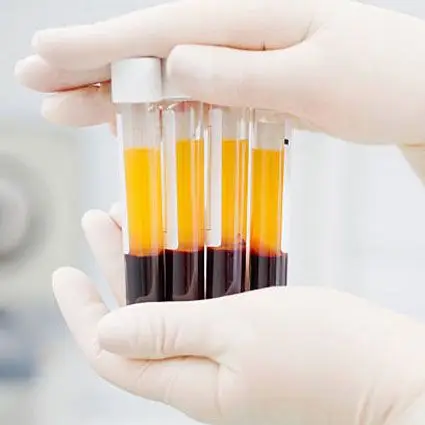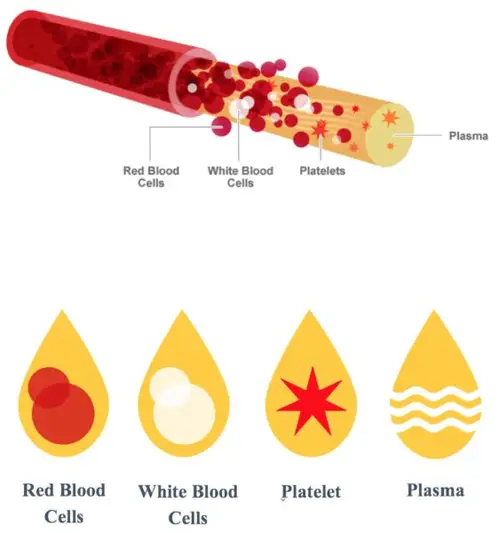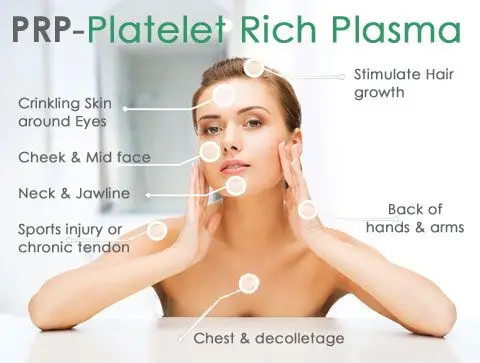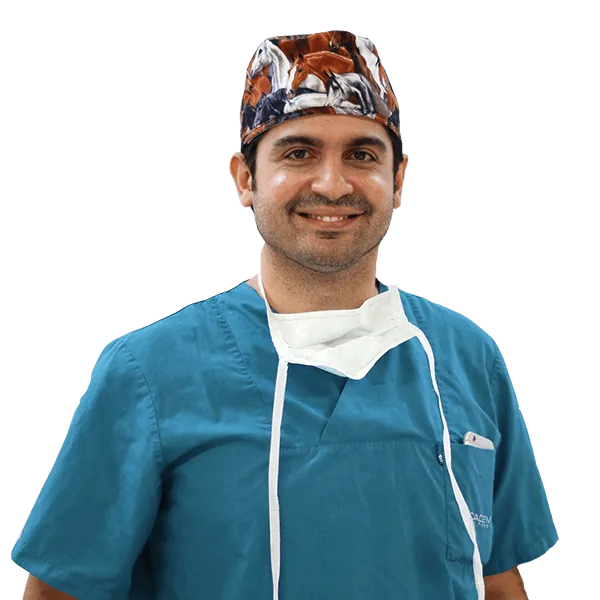
Do you have questions? Let us answer now!
Leave your number and we will call you shortly, answer any question you’d like to ask.
Everything about PRP (Platelet Rich Plasma)
RPR therapy means “platelet-rich plasma” (plasma enriched with thrombocytes). It has become more and more popular as a method for skin regeneration, including plasma face treatment and plasma hair treatment in recent years.
What is platelet-rich plasma (PRP)?
Basically, this is a treatment in which a small amount of blood taken from the patient is divided into its components using a special centrifugation process and then injections for PRP facial and PRP hair treatment are administered. The principle of PRP therapy is based on the latest knowledge about the self-healing processes that an injured or inflamed tissue goes through during its healing. It is a complex biological system in which the growth factors from the blood plasma and the thrombocytes (blood platelets) play an important role.
PRP therapy makes use of exactly these findings by isolating and concentrating the plasma with its anti-inflammatory growth factors and the platelets from the patient’s own blood. This endogenous, biologically highly effective concentrate becomes PRP injection for hair and PRP injection on face so that the self-healing of the tissue is maximally stimulated and supported on-site.
The use of autologous blood and autologous blood products has a long, scientifically based tradition in reconstructive surgery. The use of autologous blood and centrifuged autologous blood was already clinically established and scientifically documented in the 1960s. In addition, methods for enriching platelets by modifying centrifugation protocols have recently been developed.
The use of thrombocyte-rich plasma is based on the knowledge that thrombocytes release growth factors during blood coagulation, which have a positive influence on the healing process. A local increase in the concentration of the growth factors contained in the enriched platelets can accelerate wound healing and regeneration processes in defects.

How Does PRP Work?
First of all, 15 to 20 ml of the patient’s own blood is taken, the individual blood components are then separated from one another using a special preparation process and the desired components are concentrated. This plasma preparation process takes about 10 to 15 minutes. Immediately afterward, the obtained endogenous, biological preparation is injected as PRP facial or hair growth injections under sterile conditions, usually additionally controlled by ultrasound, exactly into or around the tissue or muscle.
As a rule, PRP therapy is repeated 3-4 times at weekly intervals. Since the injected product is an endogenous and extremely anti-inflammatory substance, the procedure has practically no side effects and is significantly less risky than other injection procedures. The treatment provides significantly positive PRP hair results and PRP facial benefits. It is used in eliminating fine lines and wrinkles on the face, neck, cleavage, hands, and body and to treat acne scars, pimples, and hair loss. Factors related to genetics, environment, age, stress, alcohol, and cigarettes impair metabolism and slow down cell regeneration. PRP increases cell production in the applied tissue and creates a revitalizing effect. Its platelets have a regenerating potency. Especially PRP before and after hair examples show these effects clearly.
If PRP therapy is done by experienced PRP Turkey and PRP İstanbul clinics in compliance with the necessary hygiene conditions, there are no side effects. PRP is a risk-free procedure because it is derived from the patient’s own blood. Even if a slight hypersensitivity or reddening can occur after the application due to the injection, this will subside on its own within a short time. The goal of PRP treatment is to regenerate the skin. In this regard, skin tightening, reduction in elasticity loss, elimination of wrinkles, color changes in spots, shiny skin color, and a significant reduction in scars can be seen.
Applications of PRP Injections
Platelets are essentially fragments of a megakaryocyte (the progenitor cell of all form elements) and contain on their surface a large number of the so-called growth factors – proteins that stimulate cell synthesis. They are very successful in hemostasis (stopping bleeding).
When they are injected into the body, the concentrated platelets begin to actively stimulate the growth of new cells. Fibroblasts and muscle fibers are sensitive to growth factors. Increasing their amount increases the firmness and elasticity of the skin, allows to restore damaged parts of the muscles, fascia, and articular structures, and strengthens the hair.

What are the Benefits of PRP?
Since the growth factor helps strengthen and grow blood vessels, PRP therapy improves blood circulation in the tissues, resulting in better metabolism, which allows you to return to a rich, healthy complexion.
When they are injected into the body, the concentrated platelets begin to actively stimulate the growth of new cells. Fibroblasts and muscle fibers are sensitive to growth factors. Increasing their amount increases the firmness and elasticity of the skin, allows to restore damaged parts of the muscles, fascia, and articular structures, and strengthens the hair.
PRP injection for hair aims:
- Treatment of the hair root: Rejuvenation and regeneration of the cells
- Stopping hair loss by accumulating blood circulation on the scalp
- Strengthening of remaining hair
PRP treatment in dermatology is an important treatment method, especially in the fields of hair restoration, pore and skin rejuvenation, pimple scars, skin enlargement, and striae distensae.
The combination of PRP technology with laser therapies, micro-needling, dermal fillers, and autologous fat transplantation leads to synergistic effects that primarily lead to advanced aesthetic results. PRP therapy is a promising method in dermatology, the areas of application of which are constantly expanding.
The PRP procedure can be performed on the face, neck, arms, and the entire body. The effect is outstanding: the skin becomes plumper and younger, fine lines and wrinkles are reduced and the contours of the skin are reshaped.
In plastic surgery, this method is also used in the postoperative period for healing of surgical wounds, and resorption of scars, in combination with antiseptics to prevent inflammatory processes.
Injuries that can be treated with PRP injection:
- Tennis elbow (common extensor tendon disease)
- Golfer’s elbow (common flexor tendon disease)
- Early osteoarthritis
- Chronic muscle injuries (e.g. calf and plantar fractures)
- Chronic ligament injuries (knee, ankle and elbow joint)
- Cartilage damage (articular cartilage damage covering all joints)

Do you have any questions? Get the most reliable information in the fastest way about PRP in Turkey
You can easily reach the doctors at Vanity Cosmetic Surgery Hospital and find out about the personalized answers to your questions.
Ask the Doctor
Frequently Asked Question About PRP
Does PRP (Platelet Rich Plasma) Work For Hair Loss?
Yes. PRP therapy is a very successful way of stopping or alleviating hair loss. In addition, the substance strengthens the hair roots and cells. This results in better growth.
What is PRP Hair Treatment?
It is injecting the substance into the scalp called “platelet-rich plasma”. PRP uses the patient’s own blood to treat hair loss.
What is PRP?
The abbreviation PRP stands for platelet-rich plasma. With this relatively modern treatment method, blood is taken from the patient and then processed with a centrifuge. The body’s own cells and components (e.g. growth factors) contained therein are injected directly at the site of the injury or disease without the addition of other substances. There, regeneration and healing can accelerate.
How Long Does PRP Last?
Effects last for 6-12 months and therapy should be renewed 2 or 3 times a year.
Is PRP Painful?
No. Finest needles are used for injection and local anesthetics are applied.
How Many PRP Treatments are Needed For Face?
It is recommended to have 2 to 6 treatments.
How Many PRP Treatments are Needed For Hair?
Hair loss is generally chronic, which means more treatments are needed for long-lasting results. It is recommended to have at least 3 treatments.
For detailed information about PRP you can contact with our consultants.

